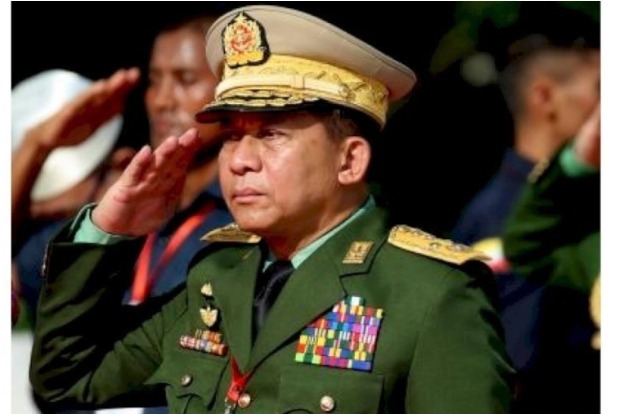Begin typing your search...
Bitter stalemate looms in Myanmar
Since Myanmar’s military, the Tatmadaw, took power on February 1, 2021, thousands of demonstrators, resistance fighters, officials, soldiers and civilians have been killed. The toll is difficult to determine and depends on human rights organisations active in the country.

Chennai
An anti-junta human rights group, the Assistance Association for Political Prisoners (Burma), said on January 13 that 1,463 “heroes” have so far died resisting the coup. The Armed Conflict Location and Event Data Project (ACLED) has estimated that the number of deaths are more than 11,000, a number reached based on newspaper articles, NGO reports and fatalities reported on social media.
An estimated 1.6 million people have lost jobs since the coup, according to a study released by the International Labor Organisation (ILO) in January. Nearly 3,50,000 were internally displaced, according to UN figures. Journalists are being killed, imprisoned, or have fled the country.
“I think the current situation is the most desperate since Myanmar became independent after the Second World War. Basically, the coup was a declaration of war by the military against the Myanmar people,” wrote Myanmar expert David Scott Mathieson in The Irrawaddy newspaper.
In past decades, conflicts were fought primarily between the Tatmadaw, recruited from the Bamar ethnic majority, and militias affiliated with ethnic minority groups living on the country’s fringes. Today, however, fierce fighting takes place in Myanmar’s heartland, such as in the central state of Sagaing.
This widespread armed resistance emerged after nationwide protests opposing the Tatmadaw were unsuccessful in toppling the junta. The military succeeded in driving people off the streets. However, this violence has turned the overall public more against the junta.
Armed “people’s militias” are springing up across the country. Military expert Anthony Davis wrote in Asia Times newspaper that 50 “people’s defense forces” have been established, some of which are supported by armed ethnic groups. They attack military, police, informants and security installations, and even engage in skirmishes with the Tatmadaw.
Ethnic groups and their armies have long operated independently of the government. They factor in the struggle between the recently created people’s militias, the civil disobedience movement, and the military.
Some ethnic groups provide shelter and training to the military’s opponents. However, these groups often insist on having total command over the areas they control, says a report by the International Crisis Group, adding only some armed ethnic groups openly support the opposition.
Three scenarios are conceivable on how the situation will develop this year – the military prevails, the opposition gains upper hand, or stalemate continues. However, none of these would lead to peace and development.
Should the military regain control and call for elections as promised, a large part of the population would still reject the Tatmadaw’s legitimacy. The military would then have to rely permanently on repression and surveillance to stay in control, and its position would not be consolidated for the foreseeable future. Under such conditions, economic and political development would be difficult.
A second scenario involves the success of Myanmar’s government in exile, the National Unity Government, a group of ousted parliamentarians called the Committee Representing Pyidaungsu Hluttaw (CRPH), and their “people’s defense forces.”
This would mean Tatmadaw soldiers and their families, numbering hundreds of thousands, would need to be integrated into society. Otherwise, new groups could emerge, continually destabilising the country.
There is also a danger of Myanmar splintering further along ethnic lines. At no time since Myanmar’s independence has the central government had control over the entire national territory. Since last year’s coup, regions and ethnic minorities have used the overall instability to further expand their autonomy.
This article was provided by Deutsche Welle
Visit news.dtnext.in to explore our interactive epaper!
Download the DT Next app for more exciting features!
Click here for iOS
Click here for Android
Next Story



